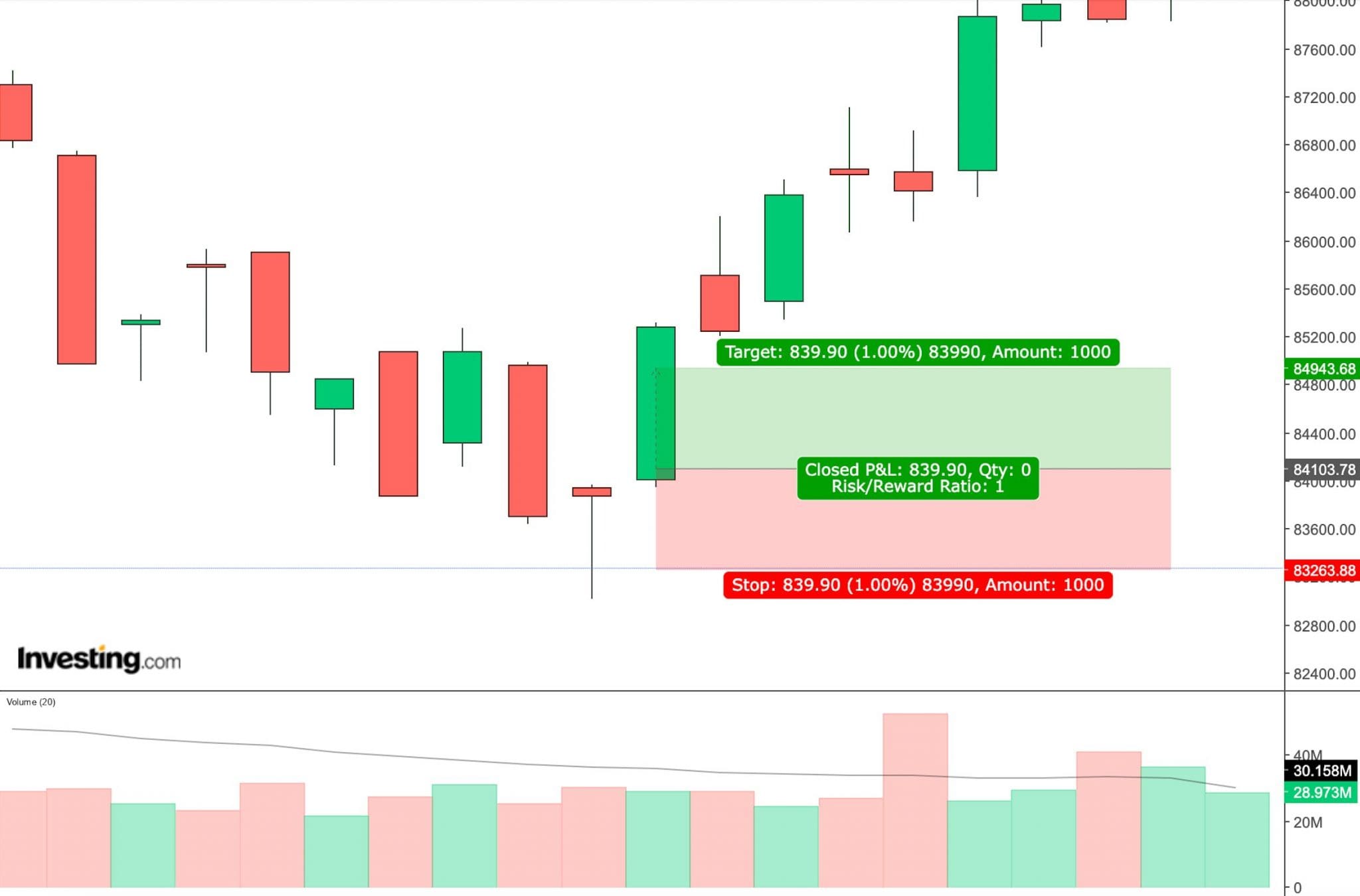CFD Trading in Poland



Whether you’re drawn to the vibrant Warsaw Stock Exchange (WSE), the expanding energy and technology sectors, or global financial markets, CFD trading in Poland provides an accessible way to speculate on price movements without owning underlying assets.
However, CFDs face strict rules from the Polish regulator, the Financial Supervision Authority (Komisja Nadzoru Finansowego), which has consistently stepped up restrictions on the high-risk trading product over the years.
Are you ready to start CFD trading in Poland? Let’s get started with this beginner’s guide.
Quick Introduction
- Unlike direct stock dealing, which grants ownership in a Polish company such as PKO Bank Polski, contracts for difference (CFDs) enable you to speculate on rising and falling market movements without owning the underlying asset.
- CFDs offer leverage. This means you can control larger positions with a smaller investment, but it also increases the potential for thumping losses. Therefore, risk management tools like stop losses and sensible position sizing are crucial.
- Day trading in Poland falls under the oversight of the Financial Supervision Authority (KNF), which enforces regulations aligned with the European Securities and Markets Authority (ESMA), notably limiting leverage to 1:30 and requiring risk disclosures.
Best CFD Brokers in Poland
Through hands-on tests, we've pinpointed these 4 platforms as the top firms for CFD traders in Poland:
How Does CFD Trading Work?
Unlike traditional assets such as stocks and cryptocurrencies, CFDs are financial derivatives that enable you to speculate on price fluctuations without owning the underlying asset.
Instead, you enter into a contract with a broker to exchange the difference in price between the opening and closing of a trade. You go long/buy if you think the price will rise, and go short/sell if you think it will fall.
This active trading approach offers access to a diverse range of Polish, European and global markets, such as:
- Polish stocks on the WSE, shares on the Euronext, and equities on the US NASDAQ
- Polish currency pairs like the USD/PLN and EUR/PLN and majors like EUR/USD and GBP/USD
- Commodities like copper, given Poland is home to KGHM Polska Miedź, one of the world’s largest refined copper suppliers
- Index CFDs like Poland’s Warsaw Stock Exchange General Index (WIG) and the US’s S&P 500
Is CFD Trading Legal In Poland?
CFD trading is legal in Poland and regulated by the KNF. The KNF ensures that CFD brokers comply with strict regulations to protect retail traders.
Poland follows guidelines set by the ESMA, which provides a clear framework for CFD trading, including limits on leverage for retail clients and risk disclosure requirements.
This makes CFD trading accessible but regulated, ensuring a safer environment for traders in Poland.
These guidelines include:
- Leverage Limits: To mitigate risks, leverage is restricted with retail traders. You can leverage up to 1:30 for major currency pairs, while leverage for non-major pairs and indices is capped at 1:20. For commodities, the maximum leverage is 1:10. For individual shares, it’s 1:5. For cryptocurrencies, it’s 1:2.
- Negative Balance Protection: Providers must implement negative balance protection to safeguard investors from incurring debt beyond their trading capital. This ensures that clients cannot lose more than their initial investment in Polish Zloty.
- Investor Protection: Brokers must provide transparent information about the risks associated with CFD trading, including the potential for significant losses due to leverage. Additionally, they must maintain client funds in segregated accounts to protect investors’ capital.
The KNF in Poland urges you to fully grasp the risks before engaging in CFD trading, ensuring you are well-informed and prepared:
- Warnings to Brokers: Warnings typically target brokers offering CFDs with excessive leverage or misleading advertisements. The KNF has published lists of suspected criminal offences by financial institutions to alert the public about potential scams. Polish authorities also take action against offshore CFD brokers attempting to provide services to Polish citizens without proper authorization.
- Ban on Incentives: In line with ESMA’s regulations, Poland has banned brokers from offering monetary incentives (like deposit bonuses) to retail traders. These incentives were previously used to lure traders into high-risk activities. This rule discourages excessive risk-taking and ensures marketing tactics do not mislead clients.
- ESMA Product Intervention: Poland also follows ESMA’s product intervention measures, which limit the sale, distribution, and marketing of certain high-risk financial products like binary options and highly leveraged CFDs. This helps ensure that retail investors have protection across the EU.
Is CFD Trading Taxed In Poland?
CFD trading is taxed in Poland. Profits from trading CFDs are generally considered capital gains and are subject to a 19% tax.
In your annual tax declarations, you must report these profits to the National Revenue Administration (Krajowa Administracja Skarbowa, KAS).
Additionally, if you earn income from foreign brokers, you may need to consider double taxation agreements between Poland and the broker’s country to avoid being taxed twice.
An Example Trade
Let’s explore a hypothetical scenario where I day trade the WIG, Poland’s oldest and broadest stock market index, on the WSE, using a contract for difference.
Launched in 1991, it tracks the performance of all companies listed on the main market of the WSE that meet specific liquidity and listing requirements.
Event Background
The Polish stock market experienced significant movement following the announcement of Poland’s stronger-than-expected GDP growth.
The economy expanded, surpassing the anticipated forecast. This positive economic data fostered a bullish sentiment across the WSE, particularly impacting the WIG, encompassing a broad range of companies across various sectors in Poland.
I had been closely monitoring the WIG and observed several large-cap companies within the index exhibiting upward momentum in response to the economic announcement.
Recognizing the opportunity presented by this favorable economic news, I decided to execute a CFD day trade on the WIG, aiming to capitalize on the short-term market rally driven by the positive GDP growth figures.

Trade Entry & Trade Exit
As soon as the GDP report was released, the WIG climbed almost immediately. I opted to trade CFDs instead of purchasing individual stocks because CFDs offer the advantage of leverage. This means I could control a larger position with less capital upfront.
I entered the market with a long CFD position on the WIG, utilizing a leverage ratio of 1:5.
For instance, if the WIG was trading at 84,103 points and I wanted to take a position equivalent to 10,000 PLN, I would only need to invest 2,000 PLN of my capital due to the 1:5 leverage.
I entered the trade at 84,103 points, anticipating further upward movement fueled by the positive market sentiment. To manage my risk, I added an equal-distance stop loss at 83,263 for a 1:1 risk/reward trade (risking 839 points to make 839 points).
Throughout the trading day, the WIG continued its ascent without any pullback, reaching my take profit target within a few hours and before the end of the trading session.
By utilizing CFDs and a 1:5 leverage ratio, I could control a substantial position with minimal capital, amplifying my potential profits within a short timeframe.
This experience highlighted the powerful advantages of leverage in CFD trading, enabling higher potential returns than traditional stock purchases.However, it also underscored the critical importance of effective risk management, as leverage can equally magnify potential losses.
Bottom Line
With a robust economy and one of the fastest-growing GDPs in Europe, Poland offers a promising landscape for CFD trading.
CFDs are legal and regulated. As a member of the European Union, Poland also adheres to the Markets in Financial Instruments Directive II (MiFID II), which establishes a standardized framework for financial markets, including CFDs.
One key aspect of CFD trading in Poland is the restriction on leverage for retail traders, which aligns with EU regulations. This is designed to protect retail investors from excessive risk, though it also limits potential profits for traders seeking higher returns.
Polish traders benefit from a regulated environment but must stay informed about tax obligations and regulatory changes to ensure compliance and effective risk management.
To start trading CFDs, visit DayTrading.com’s selection of the top CFD day trading platforms.
Recommended Reading
Article Sources
- Poland GDP - International Monetary Fund
- Warsaw Stock Exchange (WSE)
- Financial Supervision Authority (Komisja Nadzoru Finansowego, KNF)
- European Securities and Markets Authority (ESMA)
- Warsaw Stock Exchange General Index (WIG)
- National Revenue Administration (Krajowa Administracja Skarbowa, KAS)
- European Securities and Markets Authority (ESMA)
- Poland Capital Gains Tax - PWC
- Markets in Financial Instruments Directive II (MiFID II)
The writing and editorial team at DayTrading.com use credible sources to support their work. These include government agencies, white papers, research institutes, and engagement with industry professionals. Content is written free from bias and is fact-checked where appropriate. Learn more about why you can trust DayTrading.com



